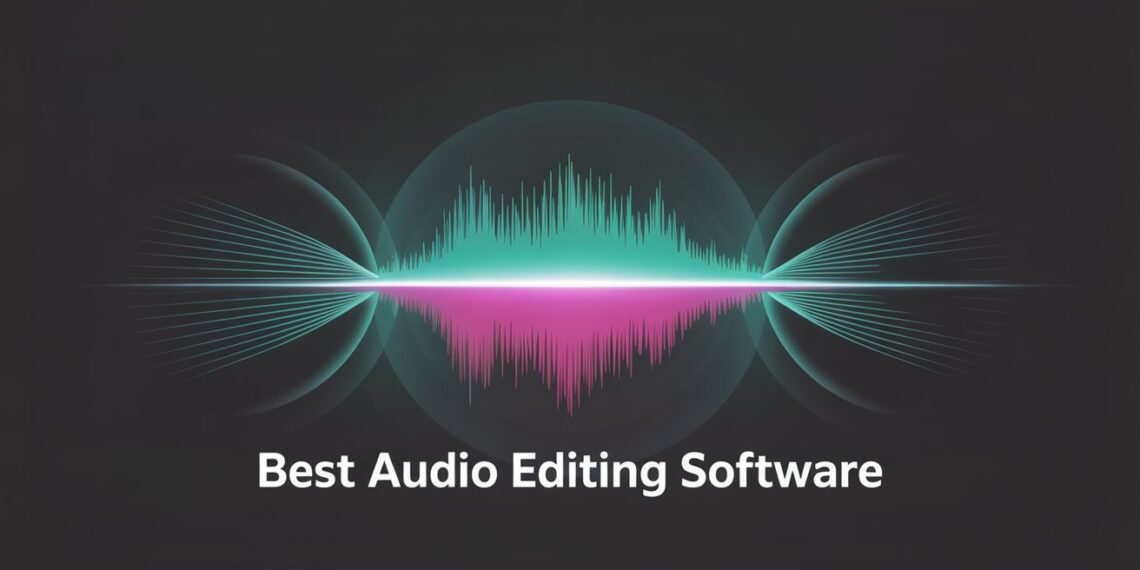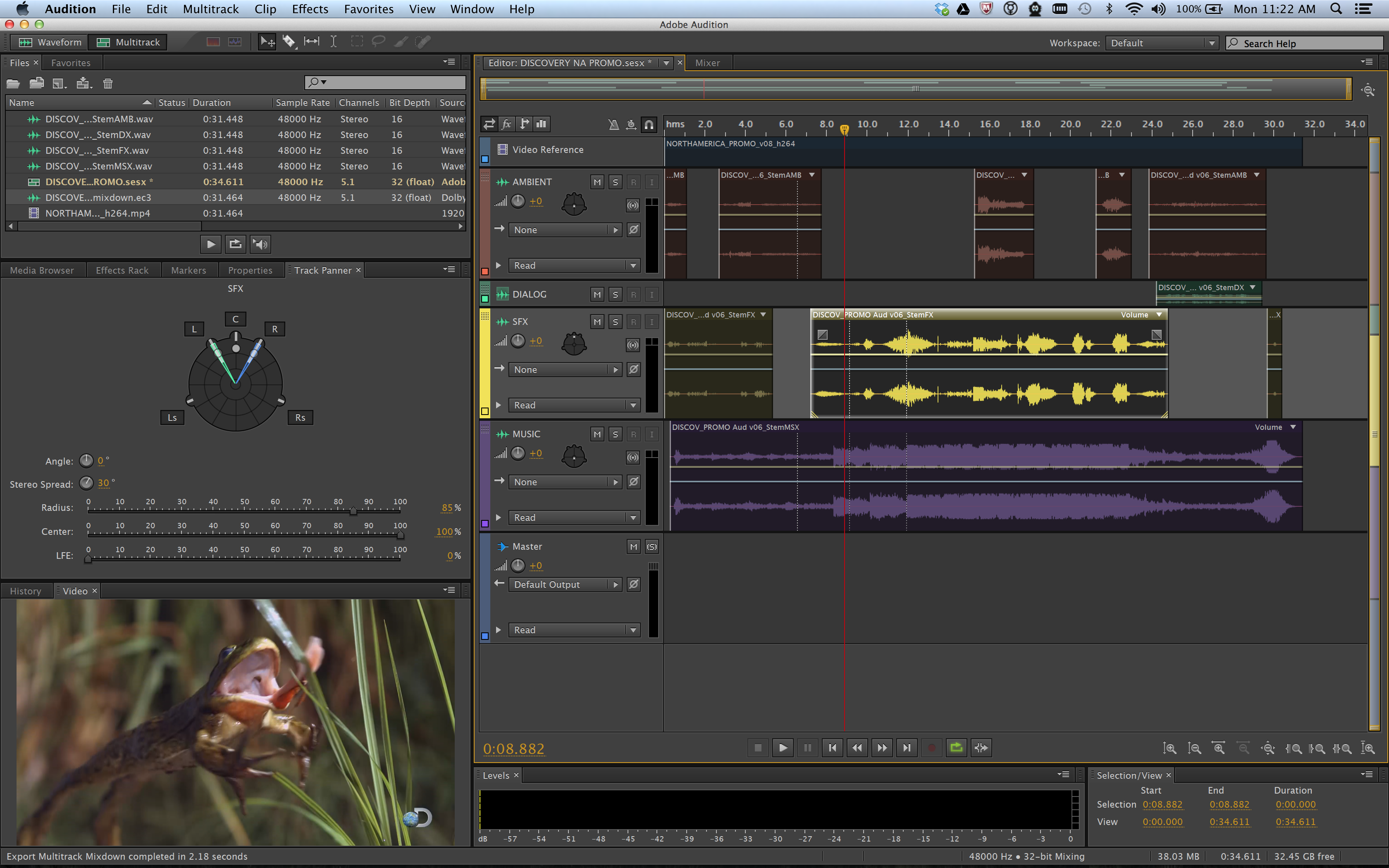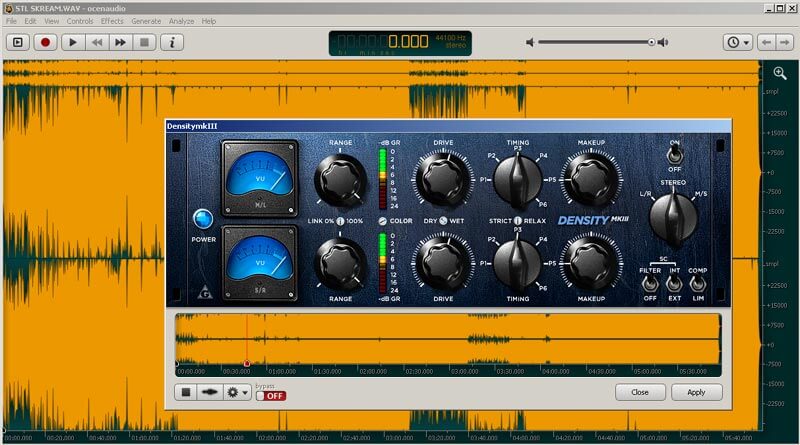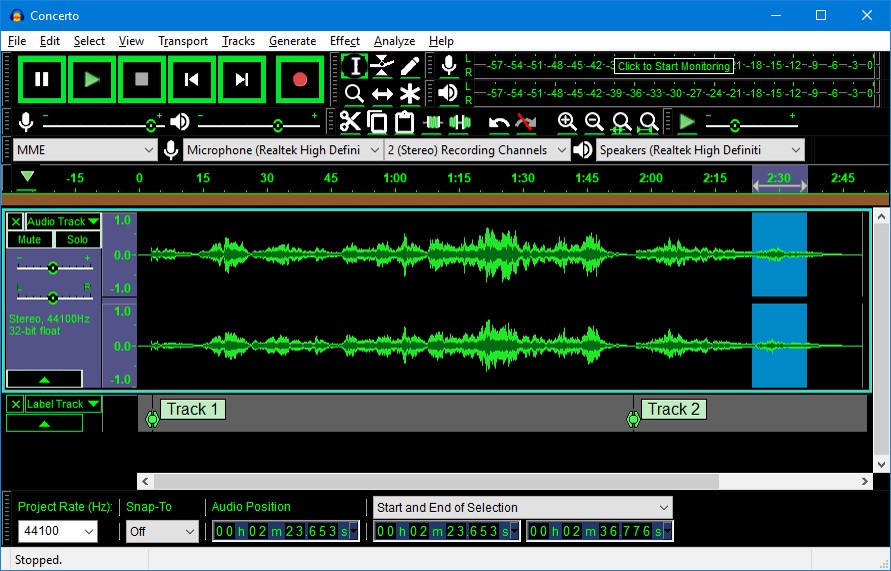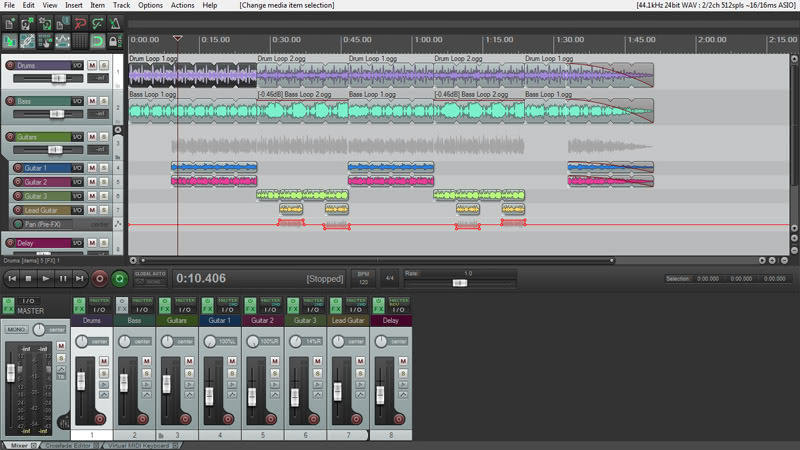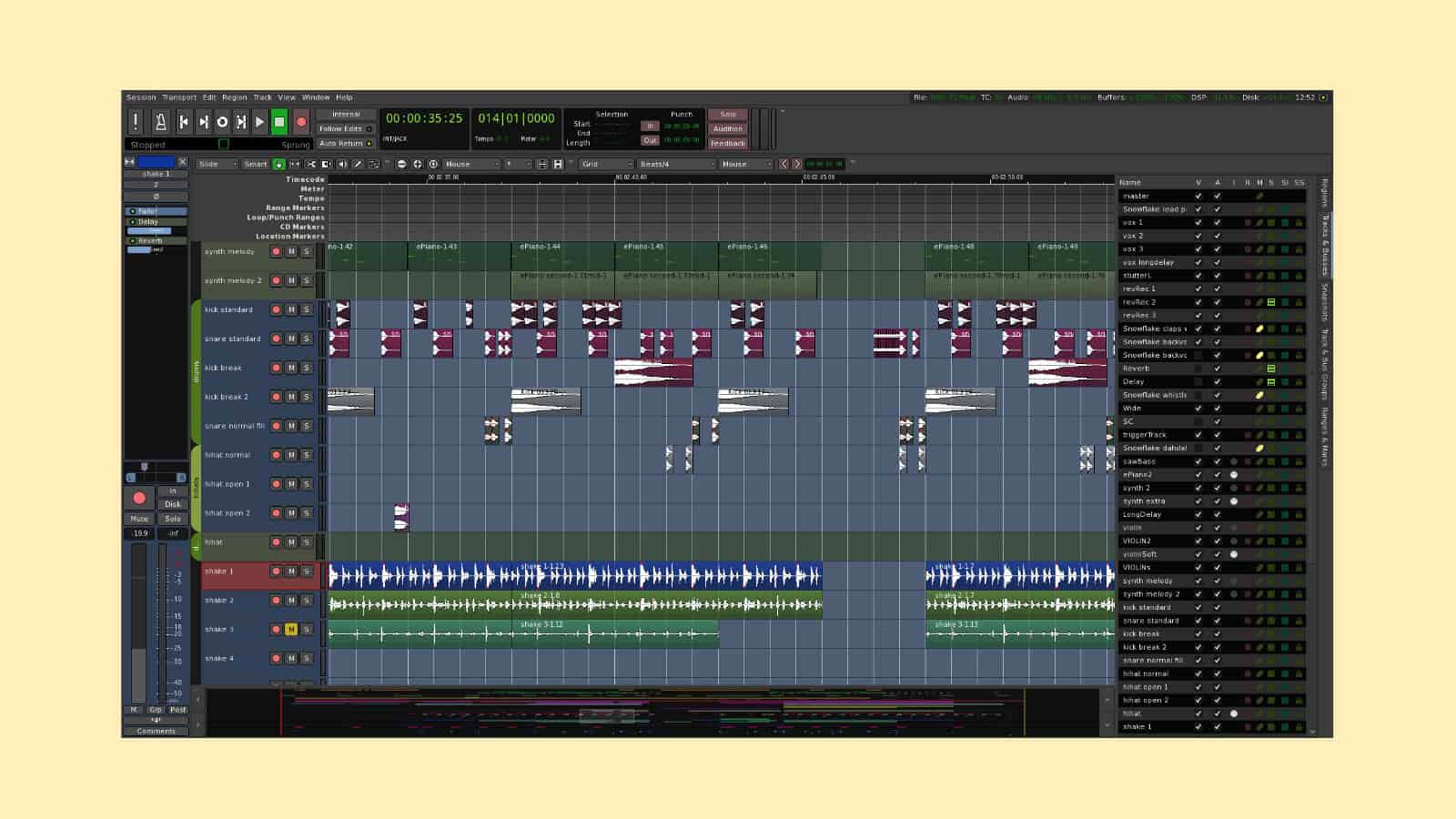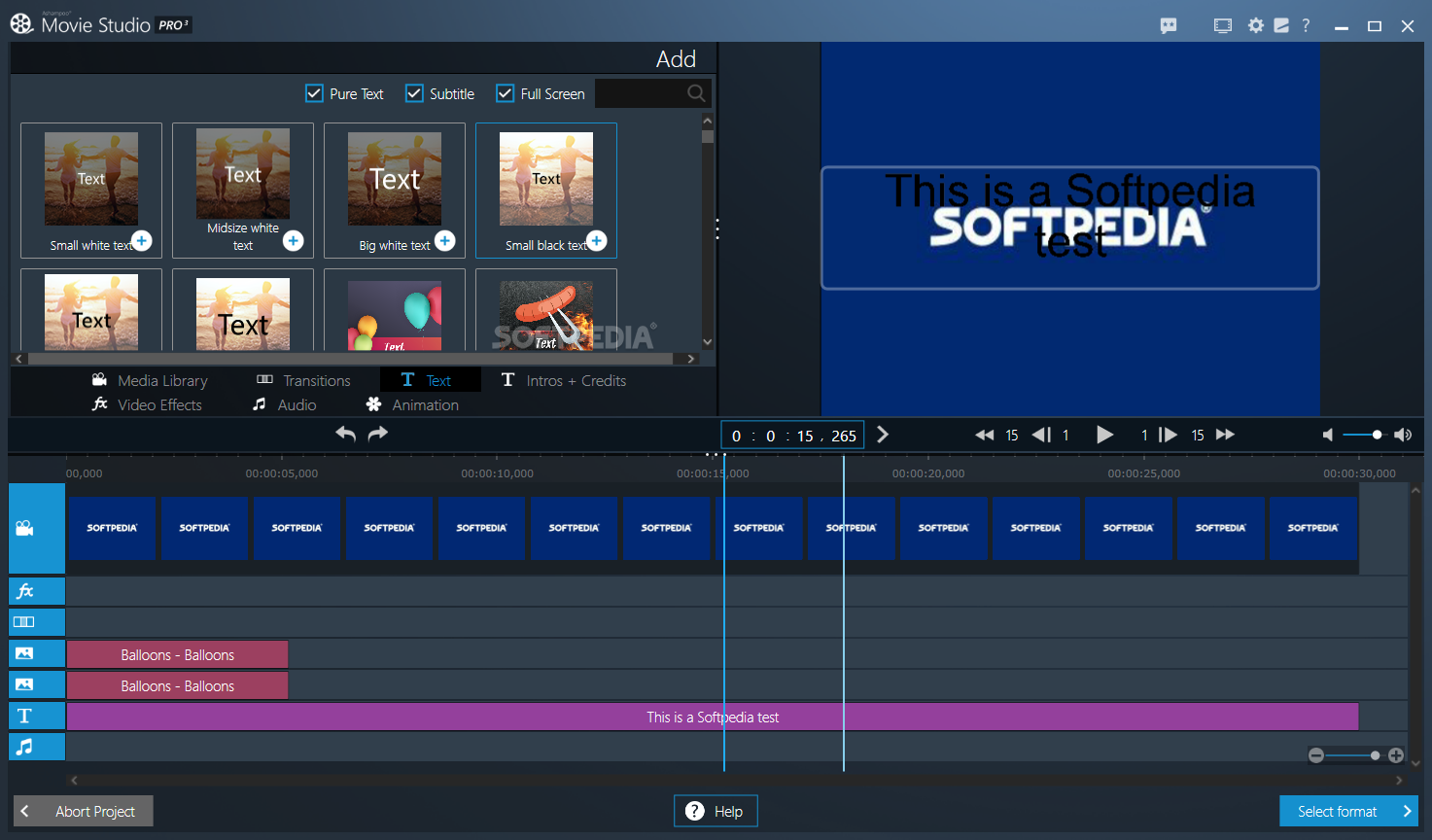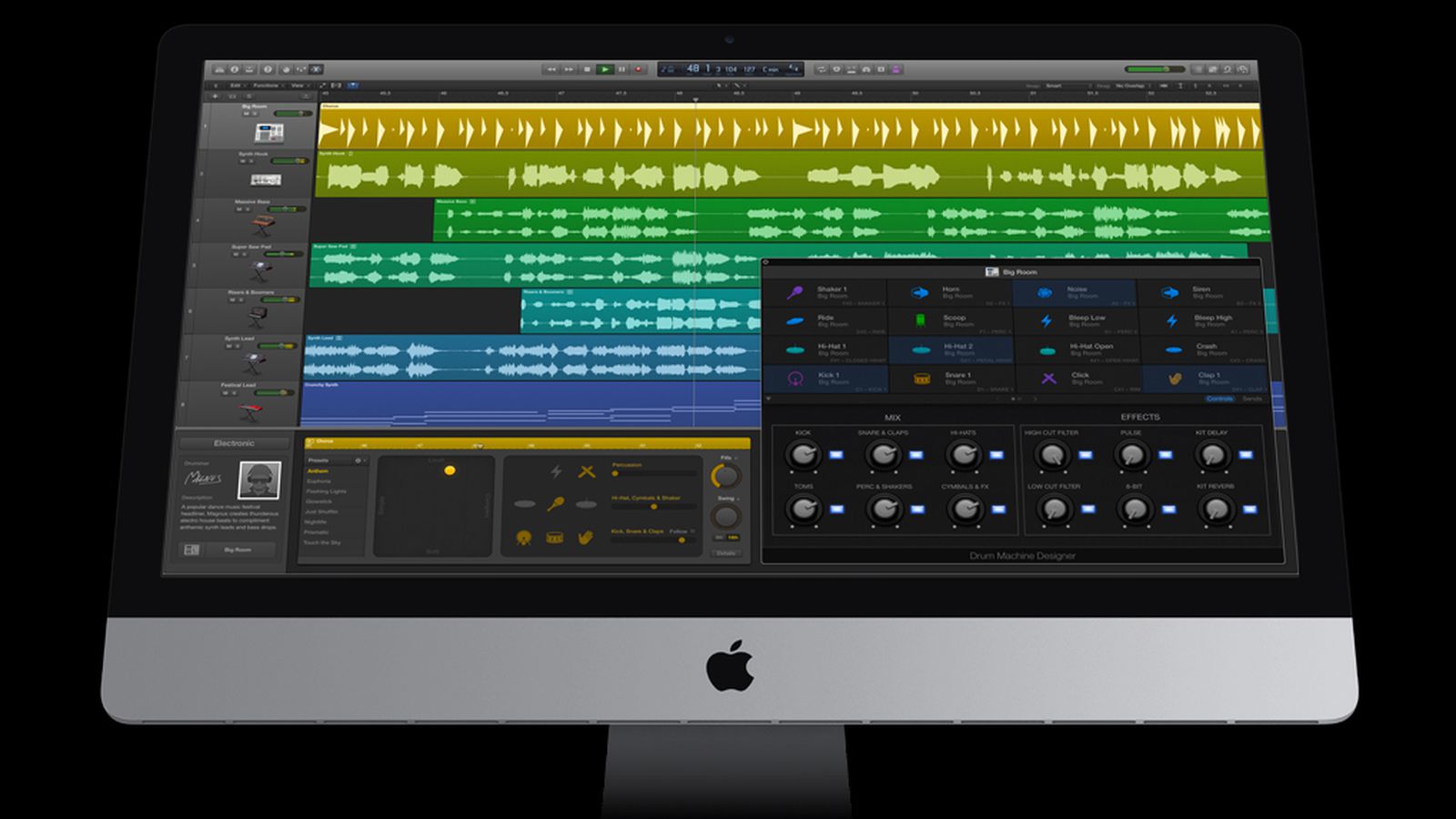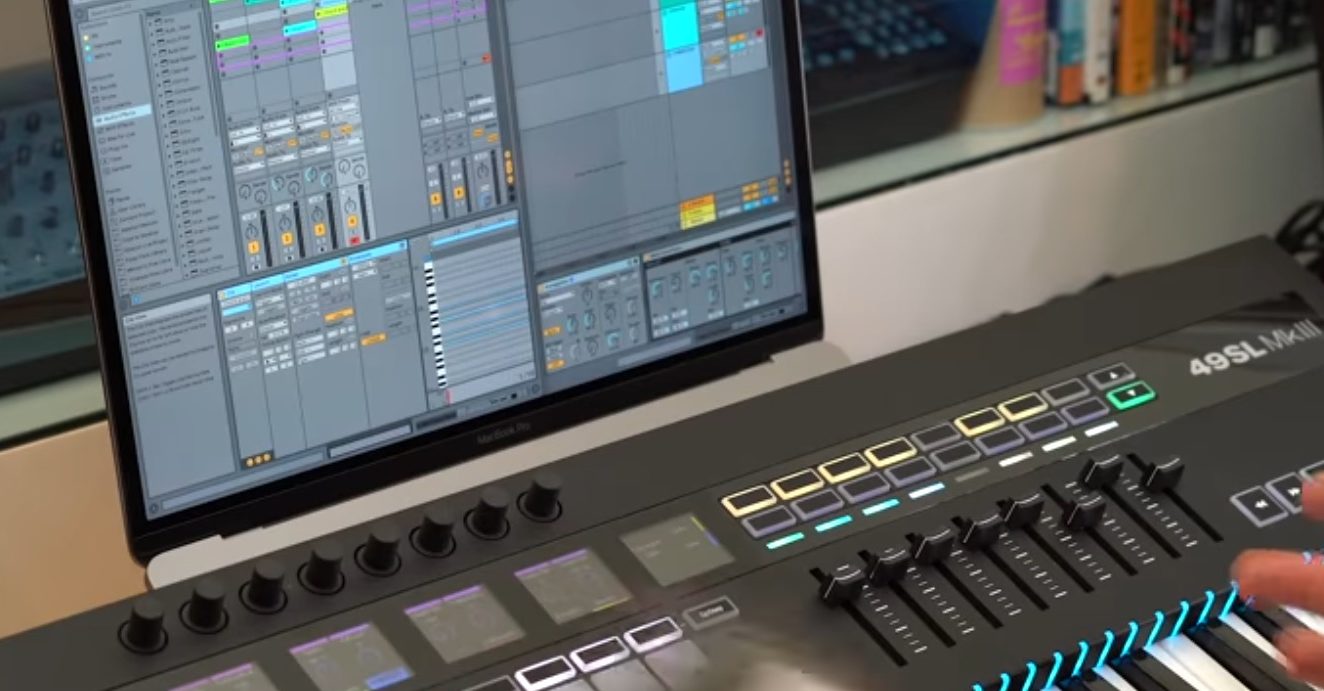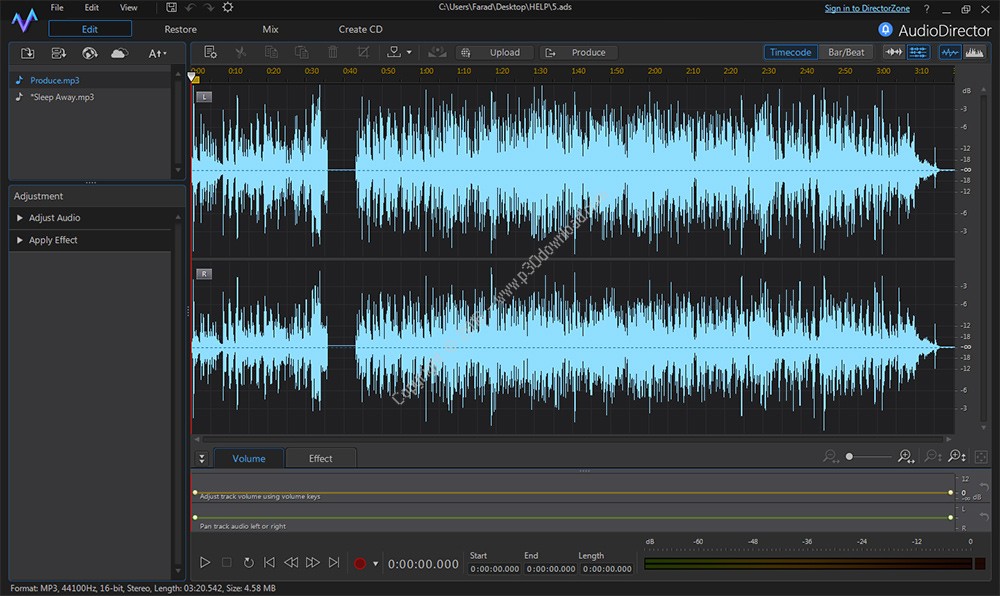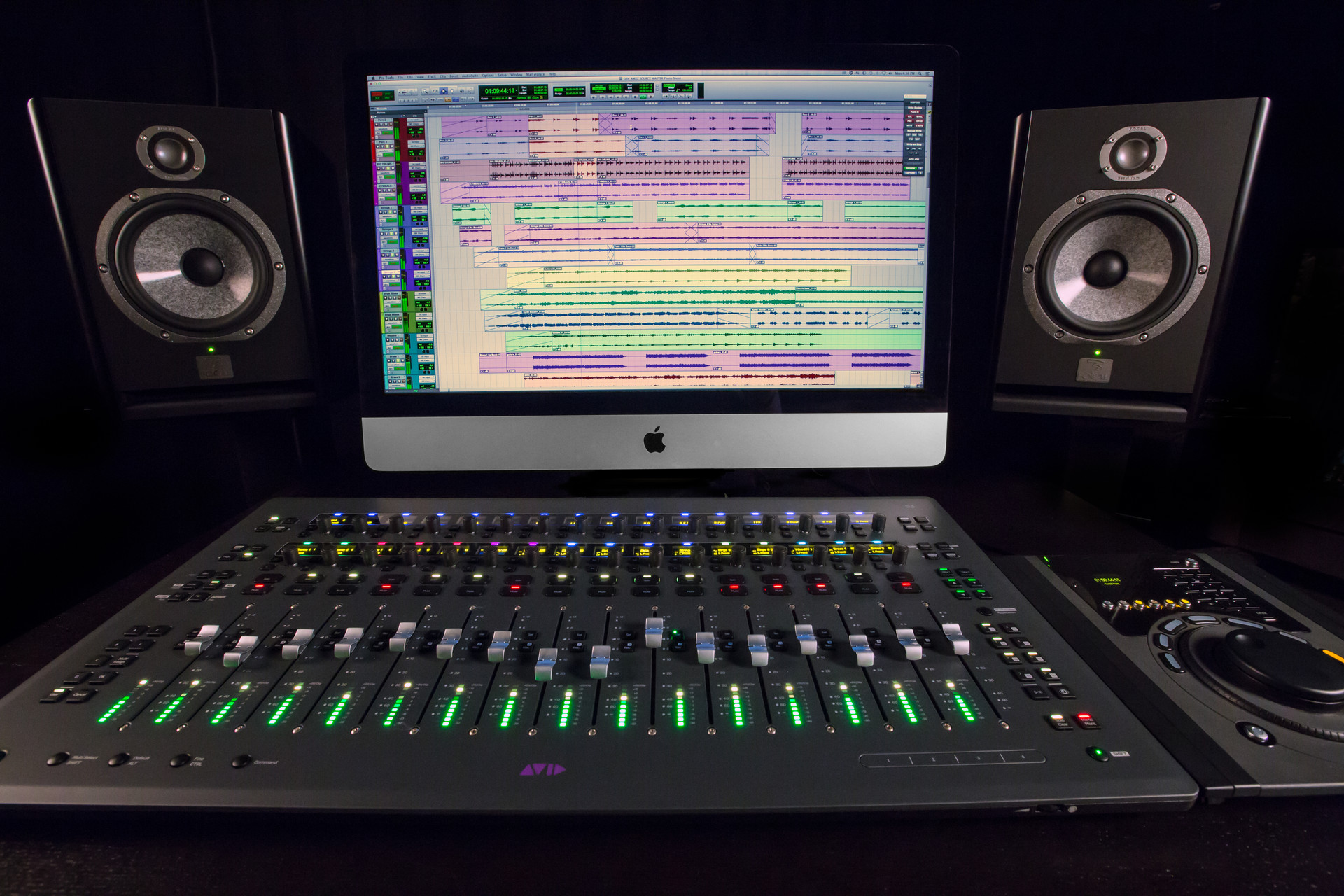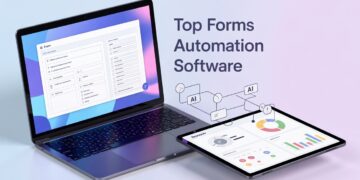Looking to give your musical compositions a professional edge? Whether you’re a podcaster, music producer, or sound designer, the right audio editing software can transform your home studio recordings into polished, studio-grade sound.
In this guide, we’ll cover everything from what audio editing software is, its core features and benefits, and the top audio editors for Windows PCs including both free and professional tools to help you create, mix, and master your audio like a pro.
What Is Audio Editing Software?
Audio editing software is a digital tool used to manipulate, enhance, and refine audio recordings. These applications allow users to:
-
Cut, copy, and arrange audio clips
-
Apply effects like reverb, EQ, and compression
-
Reduce background noise
-
Adjust pitch and timing
-
Record live or MIDI audio
-
Mix and master multitrack sessions
They are essential for musicians, podcasters, sound designers, and video editors, offering both precision and creativity in audio production.
Pros and Cons of Audio Editing Software
Pros:
-
Creative Freedom: Craft unique sounds, remixes, and effects.
-
Professional Quality: Achieve studio-grade sound with advanced tools.
-
Multitrack Editing: Record and layer multiple audio tracks seamlessly.
-
Automation & Effects: Automate volume, panning, and apply dynamic effects.
-
Efficiency: Speed up workflows with editing shortcuts and batch processing.
Cons:
-
Learning Curve: Some tools require time and practice to master.
-
System Requirements: Powerful software needs high-performance PCs.
-
Cost: Premium features often come at a price.
-
Platform Compatibility: Some software is OS-specific (Windows vs. macOS).
Key Features of Music Editing Software
-
Waveform & Spectral Editing
-
Pitch and Time Stretching
-
Real-Time Audio Effects (EQ, Reverb, Compression)
-
Noise Reduction and Audio Restoration
-
MIDI Sequencing and Virtual Instruments
-
Multitrack Recording and Mixing
-
Plugin Support (VST, AU, AAX)
-
Automation for Volume and Effects
Top 10 PC Audio Editors of 2025 are as Follows:
The top 10 tools for giving your music a polished look are listed below.
1. Adobe Audition:
Our choice for the top audio editor overall is Adobe Audition. It is a genuine top-end sound creation toolset that can transform practically any audio file into its absolute best version of itself that is industry-compliant, in 32-bit float, ready for TV, radio, and the internet.
Audition has all the standard live recording editing, analysis, and effects features to accomplish this. A fantastic selection of fixing, polishing, and delivery instruments is included. Video-sound editing is simple using Adobe Premiere Pro’s render-less video sharing feature.
Processing more intricate spoken word vocal recordings requires the help of Adobe Audition, a practical industry tool. It’s also perfect for delivering single- and multitrack projects, including pre-mastered music files, after final mixing and mastering. Audition creates packages that comply with industry standards and are loud enough to be understood by the target audience. There are problems; to start, there is no MIDI, and finding loops might be challenging. But audio editing software excels in practically every area if you produce broadcast-quality sounds.
Features:
- For complex compositions, edit audio waveforms and arrange numerous tracks in a multitrack view.
- Tools for enhancing overall audio clarity by eliminating clicks, hum, and background noise.
URL Site: www.adobe.com/products/audition.html
2. Ocenaudio:
Ocenaudio is a multitrack audio editor that is exceptionally user-friendly and more potent than expected. Although initially, it could feel a little too sleek, the UI is straightforward to use, and it’s easy to explore the program to find the right tool. Workflows are incredibly efficient and seamless.
Speech editing is remarkably efficient, and the ability to export MP4 makes it a terrific option for podcasters and content producers primarily creating videos. Here, you’ll discover pitch control, quantization, and all the other fundamental audio repair and adjustment tools. Additionally, a surprisingly large variety of effects support VST plugins.
The interface is as bare-bones as you would expect from a simplified audio editing program, at least at first glance. However, you can easily modify and customize the appearance to make it your own. It’s perfect for recording, editing, and mixing if you’re looking for something other than a full-featured DAW.
Features:
- Ocenaudio has a modern appearance and is simple to use.
- Before applying effects, listen to real-time previews of them.
- For fine tweaks, edit audio visually in the frequency domain.
- Integrate VST plugins from outside sources to broaden your creative options.
URL Site: www.ocenaudio.com/
3. Audacity:
Since many years ago, Audacity has dominated the field as the most significant free audio editor. Despite the open-source software’s lack of full-feature DAW functionality, it has enough tools for beginners and experts to complete most sound production tasks.
It’s a powerful option for two-track editing, and an extensive library of plugins gives it more functionality. With the addition of non-destructive audio editing in the most recent version, Audacity 3.2, the program has become considerably more versatile than in the past. Therefore, there are several options for precisely perfecting your audio. Curiously, as part of the launch, Audacity also made its music-sharing website audio.com live to enable users to reach a wider audience.
It’s safe to suggest that novice users might find the audio editor’s UI intimidating. It’s relatively easy to use, but it’s worth getting accustomed to it if this is your first time. It has undergone significant upgrades to compete with other audio editing programs, and it is easier to use than it initially seems. Overall, your time and attention will be well spent.
Features:
- To create complex projects, arrange and mix multiple songs.
- Apply EQ, reverb, and noise reduction, among other effects.
- Before making adjustments, examine impacts in real-time.
- Within the software, record live audio or catch streaming audio.
URL Site: www.audacityteam.org/
4. Reaper:
You can construct several soundtracks with this audio recording program and give them the required effects. It can be adjusted to meet your needs and tastes.
You can change the interface’s color scheme, appearance, macros, toolbars, and menus. It also accepts a lot of plugins. You can utilize virtual instruments, access a full mixing console, add voiceover commentary, and modify actual notation using this free music editing software program.
Despite not adhering to the studio standard, professionals frequently utilize this program. To produce audio recordings of the highest quality, they blend them with other programs.
Features:
- You can alter the interface’s design, hues, and themes to suit your tastes.
- Multiple tracks can be organized and edited, including MIDI, audio, and virtual instruments.
- Integrate effects and instruments from other sources for flexible sound manipulation.
- Automate volume, panning, and other mixing parameter changes.
URL Site: www.reaper.fm/
5. Ardour:
The Ardour design is a little retro and will likely appeal to lovers of the 1960s and 1970s, but this free audio editor has a strong foundation that satisfies professional standards.
With professional hardware remote controls, the majority of functions are controllable. You can modify your vlog video using up to 16 output channels when using Master. It is the best free audio editing program for adding multitrack audio recording, mixing, and mastering capabilities to your soundtracks. To achieve more remarkable outcomes, become acquainted with the UI and functions.
It’s also important to note that looping and patterning are not software features. Therefore, consider other positions on this list if you are specifically interested in these roles.
Features:
- Use a variety of built-in effects and third-party plugin support.
- By automating variables like volume and pan, mixtures can be made to be dynamic.
- Within projects, change the tempos and time signatures.
- Easily manage numerous projects and sessions.
URL Site: www.ardour.org/
6. Ashampoo Studio:
The best audio editing software is, without a doubt, Ashampoo Music Studio for those who have never had to modify a sound file before, in particular. due to the ease and simplicity of its user interface. There is a big waveform preview window. It is also straightforward to layer audio samples with Ashampoo because multitrack capabilities are not enabled.
Ashampoo Music Editor lets you change file metadata tags, rip music, make CDs, and create covers. This audio editing program also allows you to convert audio between various audio formats. A great program for fast-altering audio songs is Ashampoo Music Studio.
Features:
- Convert audio files between several formats, such as MP3, WAV, and FLAC.
- Rip music CDs with automated track naming to various formats.
- Take audio recordings from many devices, including line-ins and microphones.
- Audio from videos can be taken out and saved as separate audio files.
URL Site: www.ashampoo.com
7. Apple Logic Pro:
As a fully functional DAW, Apple Logic Pro is one of the top audio editors for professionals. You may upgrade from Apple GarageBand, which is free but is a stripped-down version; this makes the switchover simple because you’ll immediately recognize all your favorite features from the latter.
Logic Pro (formerly Called Logic Pro X) is ever more streamlined, attractive, and simple to use because Apple concentrates on packing it with as many capabilities as possible while still keeping it neat. As usual, if you already possess it, this update is free. The most recent version offers so much for many aspects of music production. New customers must pay $199.99.
Your creativity will be unrestricted by the Sampler upgrade, Ableton Live connectivity, 32-bit float support, extra loops and packs, a new “free tempo” tool, and recordable Pedal Board stomp boxes.
Features:
- Automatically sync the tempos of MIDI tracks and recordings.
- For compositions, create and update musical notation and scores.
- Audio recordings can be edited for time and pitch.
- Automate mix parameter settings and record live audio and MIDI.
- Use sophisticated mixing software for audio of the highest caliber.
URL Site: www.apple.com/logic-pro/
8. Ableton Live:
For professionals searching for a fully featured DAW built for flexibility and sharing, Ableton Live 11 is a beautiful option. Innovative presentation of fundamental functions is increased in Session and Arrangement Views.
This achievement of being a hybrid DAW and instrument that is equally at home in a studio or on stage is accomplished by Ableton Live 11. Live 11’s friendliness invites fresh inputs, and players live or remotely across networks thanks to matching Push hardware and sophisticated time-following features.
Live 11 contains capabilities for video scoring where its time-warping effects can allow editors to sync efficiently. It will appeal to performers, recording artists, and home musicians.
Features:
- For dynamic performances, real-time trigger audio and MIDI clips.
- Make complex MIDI patterns and sequences for your musical compositions.
- It allows for real-time manipulation and effect application, making it ideal for live performances.
- Provides a variety of virtual instruments for the creation of electronic music.
- Includes a wide range of signal processors and audio effects.
URL Site: www.ableton.com/
9. Cyberlink AudioDirector:
Cyberlink AudioDirector has all the recording, editing, mixing, and clean-up capabilities you need to create professional-level sounds, making it one of the best audio editors for newcomers and seasoned users.
Although this PC-only audio program has a high learning curve, it quickly becomes evident how to use it thanks to various tutorial-style explanations (although we’d like to see more of them for beginners). To fully understand what the tools are capable of, plan on spending some time with the preview/original button, which is conveniently available on all editing windows.
AI and machine learning tools work with AudioDirector, as with many other creative software, most notably Adobe. And they’re executed quite well. We were impressed with the architecture of the post-production program when we evaluated it, which increased workflow efficiency and decreased the use of imprecise manual controls. However, in several instances, we discovered that manually fine-tuning rather than depending on AI produced better outcomes.
In addition to integrating with popular video editors PowerDirector, ColorDirector, and PhotoDirector, CyberLink’s audio editing software also facilitates the creation of full-spectrum content.
Features:
- To create complex projects, edit and combine various audio tracks.
- Visually edit audio using waveform and spectral perspectives.
- To boost audio quality, use several audio effects and upgrades.
- Recordings should be cleaned up of background noise and undesired artifacts.
URL Site: https://cyberlink-audiodirector.en.softonic.com/
10. Avid Pro Tools:
The complete audio editing system is Avid Pro Tools for professional sound production. It is widely utilized in the global media and entertainment sectors and is hailed by many as an industry standard, frequently to the point where customers contractually require it.
The Pro Tools app suite has been updated, introducing three options based on your skill level—casual, moderate, or professional. Pro Tools Intro, a free editing program, also provides an excellent starting place, even though it only has a rudimentary capability.
It’s not the most straightforward tool because, as a fully-featured digital audio workstation, it’s primarily intended for users familiar with this kind of software and have the corresponding hardware. However, it’s perfect if you have a sturdy audio PC or laptop and a multi-screen arrangement.
Features:
- Use a range of virtual instruments to create music.
- Add AAX plugins from outside sources to extend functionality.
- Synchronise audio and video flawlessly for post-production operations.
- Manage sessions, automate parameters, and record audio and MIDI.
URL Site: https://www.avid.com/pro-tools
Conclusion: Which Audio Editing Software Is Right for You?
Choosing the best audio editing software depends on your goals, experience, and budget. Whether you’re an aspiring artist seeking a free solution or a professional needing cutting-edge tools, the options above cater to all needs.
Look for:
-
Multitrack support
-
Plugin compatibility
-
Real-time editing features
-
High-quality export formats
Invest time in learning the tool of your choice, and you’ll soon be producing audio that rivals studio-quality productions.
FAQs: Audio Editing Software
Q1: What is audio editing software used for?
A: Editing, mixing, recording, and applying effects to audio. Useful for music, podcasts, film soundtracks, and more.
Q2: Is audio editing software available for free?
A: Yes. Top free options include Audacity, LMMS, and Ardour.
Q3: Which is the best professional audio editing software?
A: Adobe Audition, Avid Pro Tools, Logic Pro, and Ableton Live are among the best.
Q4: Can I edit MIDI with audio editing software?
A: Yes, many tools like Logic Pro and Reaper offer MIDI sequencing and editing.

